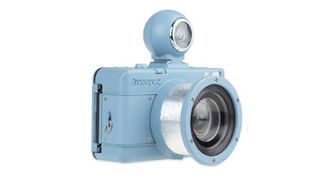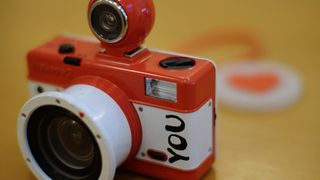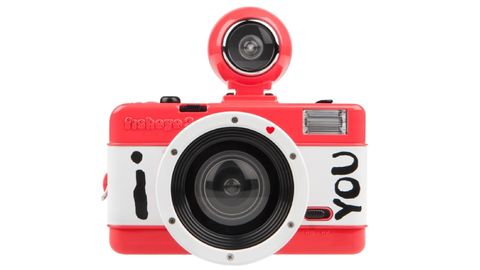TechRadar Verdict
Pros
- +
35mm film commonly available
- +
Light
- +
Easy to use
Cons
- -
Expensive film processing
- -
Extremely limited controls
- -
Rubber cap
Why you can trust TechRadar
Originally introducing a Fisheye camera back in 2005, Lomography's Fisheye No 2 brings with it a number of upgrades, most notably in the form of a bulb mode – which enables you to capture longer exposures – and an 'MX' switch, which enables you to set multiple exposures on the same section of film.
Like its predecessor, the Lomo Fisheye No 2 features an almost 180 degree field of view, and takes 35mm film. This is still relatively easy to come by in many supermarkets, chemists and so on. Lomography also produces its own range of films, which we used during this test. Processing on the high street is also relatively easy to find, but again you can use Lomography's own lab, which we used here.
For those not in the know, Lomography is the company that has brought back many incarnations of analogue photography. It is proving extremely popular with its unique designs in many different styles.

Lomography cameras are well known for their erratic behaviour. This can include light leaks, ghosting, flare and other unusual properties, which most users believe to be part of the charm.
The Lomography Fisheye No 2 camera - priced at around £79 in the UK and $75 in the US - comes with an optical viewfinder that can be attached to the camera's hotshoe, enabling you to more accurately judge composition than you could with its predecessor, which didn't come bundled with the accessory.
A fixed aperture of f/8 is available on the camera, while shutter speeds are limited to 1/100 second in standard, or as long as you need in Bulb mode. The approximate focal length of the lens is 10mm.
Build quality and handling
As with most Lomo cameras, the Fisheye No 2 is not for shy and retiring types.

Available in a variety of fun designs - including Python, Faded Denim, Vibrant Orange and others - probably the most striking aspect of the camera is the bulbous fisheye lens on the front of it.
Again like many Lomography cameras, the Fisheye No 2 is very light, because it's constructed from plastic. However, it also feels relatively robust and able to be chucked into a bag ready to be taken anywhere.
Controls on the camera are few and far between, leaving you free to concentrate on composition. The only switches you'll find on the Lomography Fisheye No 2 are those to go from the standard shutter speed of 1/100 second to Bulb mode. Handily, there's also a Lock mode, which stops you accidentally switching into Bulb mode.

On the back of the camera there's also the "MX" switch, which stands for multiple exposure. Like many other Lomography cameras, the Fisheye No 2 is capable of creating unlimited multiple exposures on one frame of film, enabling you to use some fun, creative, but unpredictable effects.
The camera comes with a rubber lens cap that can be attached to protect the fisheye optic. However, on our review model at least, this didn't fit very snugly, and fell off at almost every opportunity – especially when the camera was floating around in a handbag.
A circular viewfinder on the top of the camera is designed to give you a rough guide as to how the composition of the image will turn out. Although you have to remember that it won't be exactly as you see through the viewfinder, thanks to parallax error, it's a useful addition to the original Fisheye camera.

A dial at the back of the camera is provided for winding on the film after each frame is taken. Although this can be a little frustrating for those used to automatic (and of course digital) cameras, it does at least help prevent wasted shots, because the next image can't be taken until the film is wound on.
Once the film is used up, you will need to rewind the film using the gear at the top of the camera. The gear can be a little fiddly to use, so you may find this takes longer than anticipated.
Speaking of the film, loading it is pretty easy, especially if you have worked with 35mm film cameras in the past. If not, it's pretty quick to learn, and you can insert a new film in under a minute.
Amy has been writing about cameras, photography and associated tech since 2009. Amy was once part of the photography testing team for Future Publishing working across TechRadar, Digital Camera, PhotoPlus, N Photo and Photography Week. For her photography, she has won awards and has been exhibited. She often partakes in unusual projects - including one intense year where she used a different camera every single day. Amy is currently the Features Editor at Amateur Photographer magazine, and in her increasingly little spare time works across a number of high-profile publications including Wired, Stuff, Digital Camera World, Expert Reviews, and just a little off-tangent, PetsRadar.


